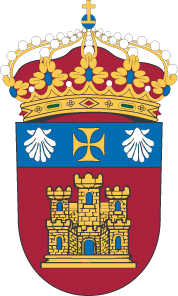Por favor, use este identificador para citar o enlazar este ítem: http://hdl.handle.net/10259/9542
Título
Quantitative Analysis of Vernacular Residential Building Typologies and Bioclimatic Strategies in the Warm-Summer Mediterranean Climate: The Montesinho Natural Park as a Case Study
Publicado en
Buildings. 2024, V. 14, n. 8, 2321
Editorial
MDPI
Fecha de publicación
2024-08
ISSN
2075-5309
DOI
10.3390/buildings14082321
Resumo
Vernacular architecture embodies a lasting connection between communities, climates, and topographic landscapes, providing basic shelter needs for centuries. Adopting Montesinho Natural Park as a case study, this paper explores the essence of vernacular architecture, highlighting its adaptation and dynamic relationships with local climates, geographical features, and scarce resources. This paper firstly provides a quantitative characterisation of residential vernacular building typologies in several villages of the park based on field-collected data, using photography and videography for data reliability. The building typologies were then categorised according to their prominent architectural features, prioritising the access to the upper floor and door’s relative location and their integration within the landscape’s topography. The collected data were analysed by averaging each typology percentage across the villages and calculating dependency probabilities between each typology and the villages, aiming to identify the most frequent typologies and their dependency relationships with villages. This paper’s outcome entails the Protruding Staircase typology as the most common typology in the selected villages. Despite modern interventions, traditional features endure, emphasising practicality and resource efficiency. Among them, several bioclimatic strategies were identified and analysed qualitatively based on their potential contribution to energy efficiency and savings, highlighting their relationships with the local context and the typologies presented. The findings are important in supporting decision-making related to vernacular heritage in Northeastern Portugal. The bioclimatic construction strategies identified may be used as preliminary references to incorporate into rehabilitation projects and sustainable architecture practices, enhancing inhabitants’ thermal comfort and living conditions.
Palabras clave
Bioclimatic solutions
Passive strategy
Typology
Vernacular architecture
Materia
Construcción
Building
Ingeniería
Engineering
Versión del editor
Aparece en las colecciones











